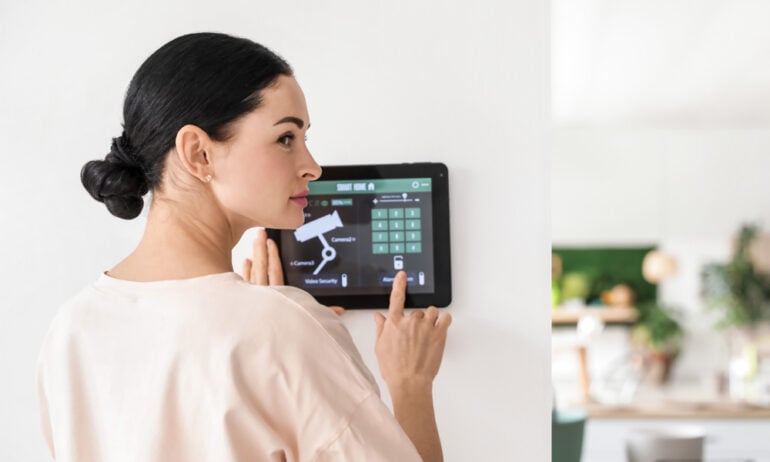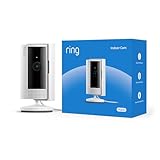Security systems have changed a lot over the years. Now, it’s possible to install your own home security system and customize it for your specific needs. However, not all smart security devices work together. To help you choose, here’s everything you need to know about the most popular smart home security systems and the plans they offer.
Step 1: Survey Your Home
Before choosing a smart security system, you’ll need to survey your home and assess your security needs. First, count how many windows, doors, and other points of entry there are on your property. This will help you decide how many window and door sensors to add to your security system.
Once you compile a list of your home’s physical properties, think about all the security concerns you have. Aside from windows and doors, are there other areas where an intruder could break in? For most areas, you might only need a smart camera, while others might require a motion sensor instead.
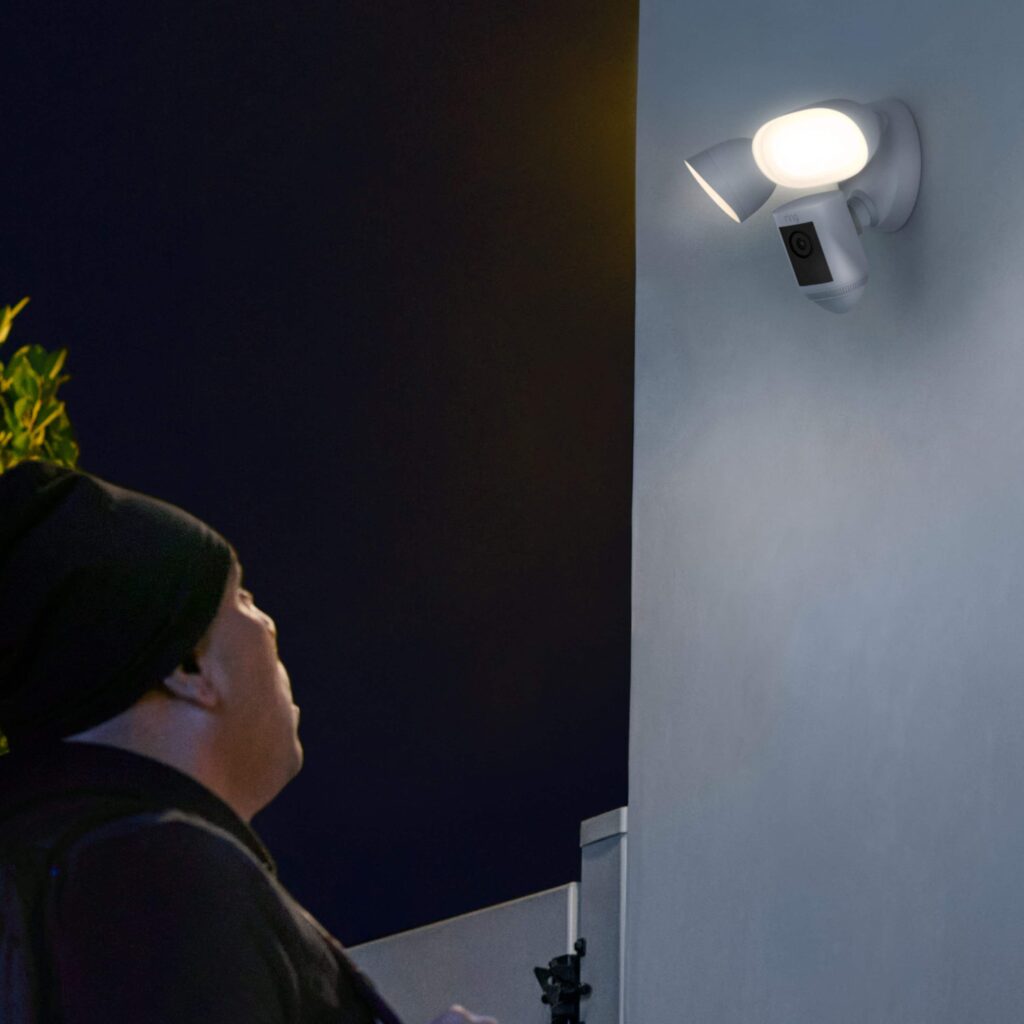
Then think about other security concerns you might have. These days, you can get sensors that alert you when a fire breaks out in your home, when your water pipes break and flood the basement, and much more.
Step 2: Traditional or DIY?
Before you can choose a smart home security system, you’ll need to choose whether you want to have it professionally installed or you want to do it yourself. Traditional security companies, like ADT or Brinks, will include all the devices, installation, and monitoring for you.
While a traditional security system might sound easier to set up, you’ll need to sign a long-term contract, which can end up costing a lot more money in the long run. Plus, you won’t get the same freedom to add as many devices to your security system as you want.
If you choose to build your own smart home security system, it can save you a lot of money, but you might not get all the same benefits. Most smart home devices require you to pay a monthly fee to use certain features and services, like professional monitoring. However, these subscriptions are usually cheaper than what a traditional security company will charge.
Read More: How to build a smart security system
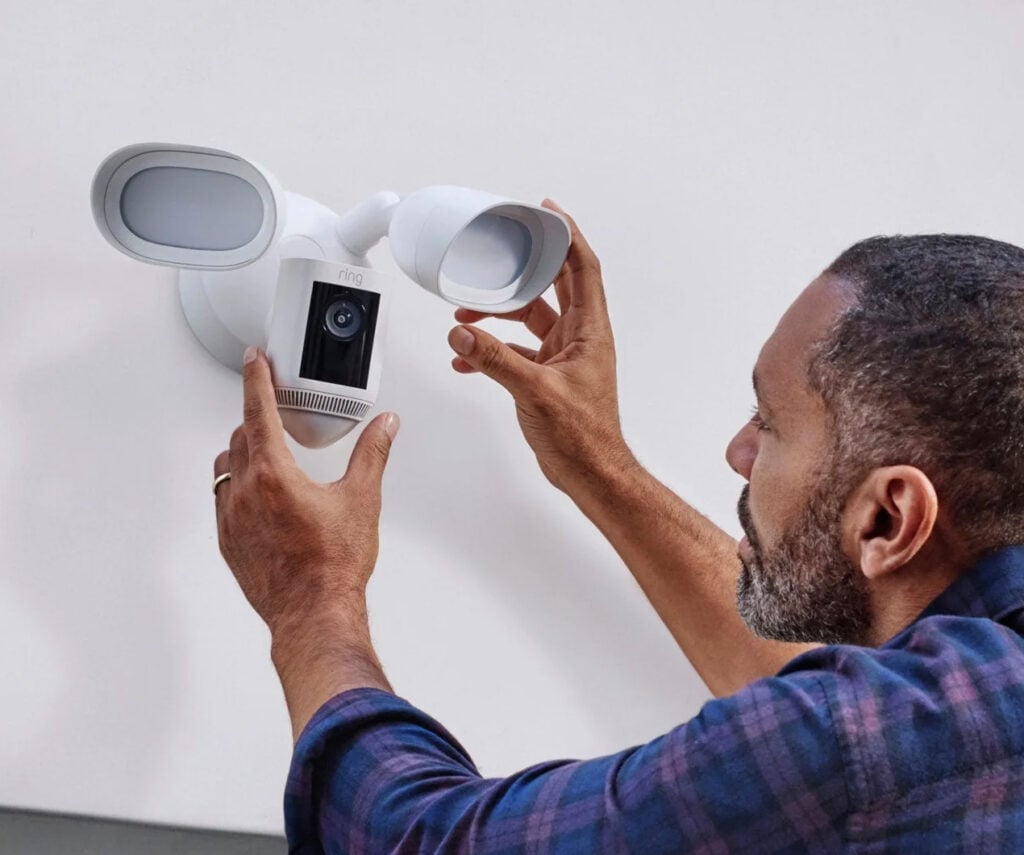
If you would like to build your own smart security system, but you don’t want to do it yourself, HelloTech can give you the best of both worlds. Our friendly technicians can come to your home and professionally install all your smart security devices for you. We’ll listen to all your preferences, and you won’t have to pay until the job’s done the way you want.
Step 3: Choose a Smart Home Ecosystem
If you decide to build your own smart security system, it’s a good idea to choose a smart home ecosystem first. Not all smart devices work with each other, but if you choose a smart home ecosystem first, you’ll know they are compatible if you see they “work with” or have your smart assistant “built-in.”

Currently, there are 3 major smart home ecosystems to choose from: Amazon Alexa, Google Home, and Apple HomeKit. Each smart home ecosystem has its own pros and cons, so if you haven’t already decided, here’s a quick rundown:
- Amazon Alexa: Works with the most number of smart home devices, offers more budget options, easy to use, but you will be served up with a lot of ads from your Alexa devices.
- Google Home: Works with lots of devices, great for Android users, and the Google Assistant is smarter and better at answering questions.
- Apple HomeKit: Doesn’t work with nearly as many devices, and HomeKit devices are usually more expensive than the alternatives, but it’s great for iPhone and Apple users.
While it isn’t necessary to choose a smart home ecosystem, it does allow you to control all your smart security devices with a smart speaker or smart display. For example, you can say, “Hey, Google, show me the front door camera,” and you will be able to see, hear, and speak to your visitors from your smart displays.
Read More: The benefits of smart home security
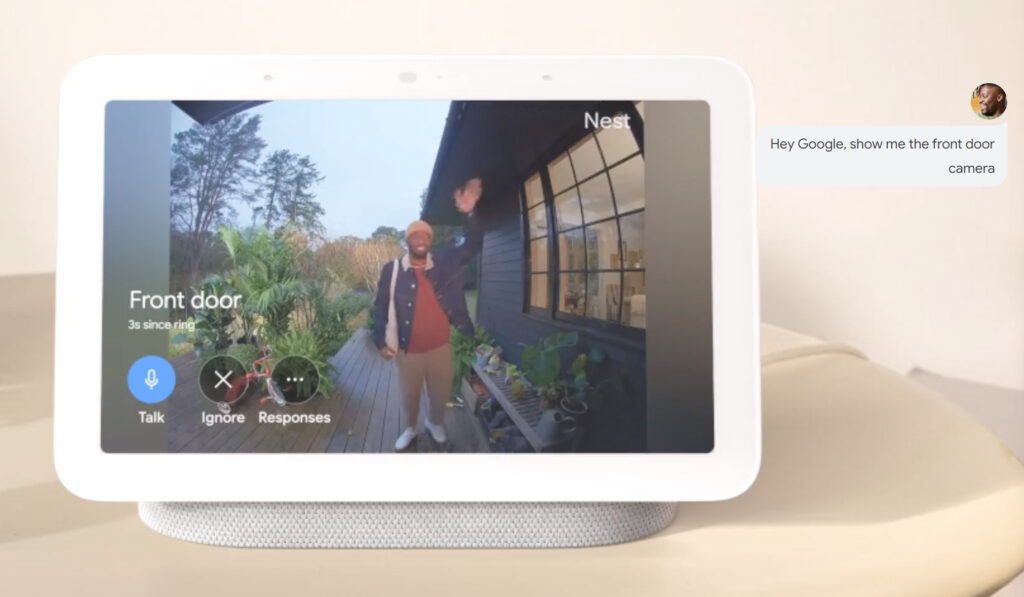
Step 4: Choose a Smart Home Subscription Plan
When building a smart home security system, it’s a good idea to choose devices from the same brand. Then you will be able to control all your devices from a single app on your smartphone. However, not all smart home brands offer the same features and services.
When comparing smart home brands, one of the most important things to look at is the subscription plans that the company offers. Without a subscription plan, most smart devices only let you see a live view from your video doorbells and smart cameras.
When you do sign up for a subscription plan, you’ll be able to review video clips recorded by your devices whenever they detect motion. Some subscription plans also provide additional features and services, like 24/7 professional monitoring.
To make things simple, here are some of the major smart home brands and the security plans they offer:
Ring
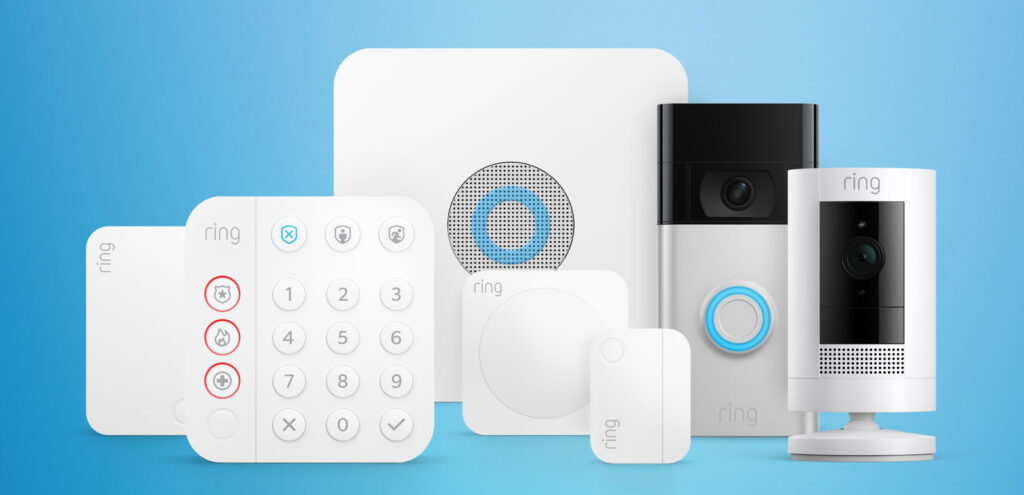
Since Amazon acquired Ring, it has become one of the leading smart security brands. Ring offers a wide variety of security devices, all of which will work perfectly with your Alexa smart home. You can also get 24/7 professional monitoring with a Ring Protect subscription plan.
- Free: If you don’t want to pay for a subscription, you will still get real-time notifications, but you’ll only be able to see a live video from your doorbells and security cameras.
- Ring Protect Basic ($4.99/month): This plan gives you 180 days of video recordings, and you can arm the alarm system from your smartphone or with voice commands.
- Ring Protect Plus ($10/month): If you want to connect more than one device, you’ll need to get the Ring Protect Plus plan.
- Ring Protect Pro ($20/month): In order to get 24/7 professional monitoring and emergency response for police, fire, medical, and other services, you’ll need to get the Ring Protect Pro plan.
- Virtual Security Guard ($99/month): If you want even more protection, Ring does offer a plan that gives you 24/7 video monitoring and intruder deterrence from Rapid Response.
Google Nest
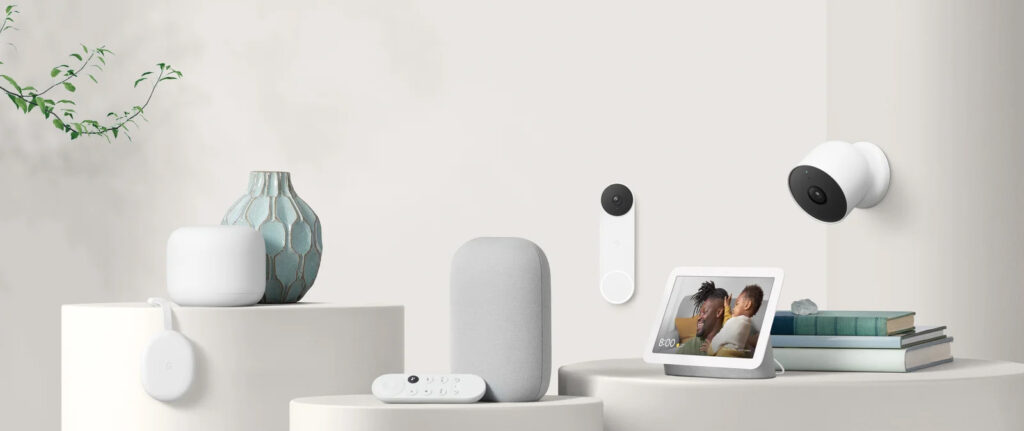
Google acquired Nest back in 2014, and the tech giant has slowly been building up its smart home lineup ever since. In fact, you can even find Google’s smart devices offered by traditional security companies, like ADT. However, there is no professional monitoring with any Nest Aware subscription plans.
- Free: Without a subscription plan, you will get notifications, but you’ll only be able to watch a live view of your video doorbells and smart cameras. However, the new line of Nest products will also give you 3 hours of event video clips for free.
- Nest Aware ($10/month): The basic plan gives you 30 days of event video recordings and other features like familiar faces and other intelligent alerts. This plan works with all your Nest devices in one location.
- Nest Aware Plus ($20/month): This plan gives you an additional 30 days of event video history, for a total of 60 days. You’ll also get 10 days of 24/7 video history, so you can review everything that happened on your property.
SimpliSafe
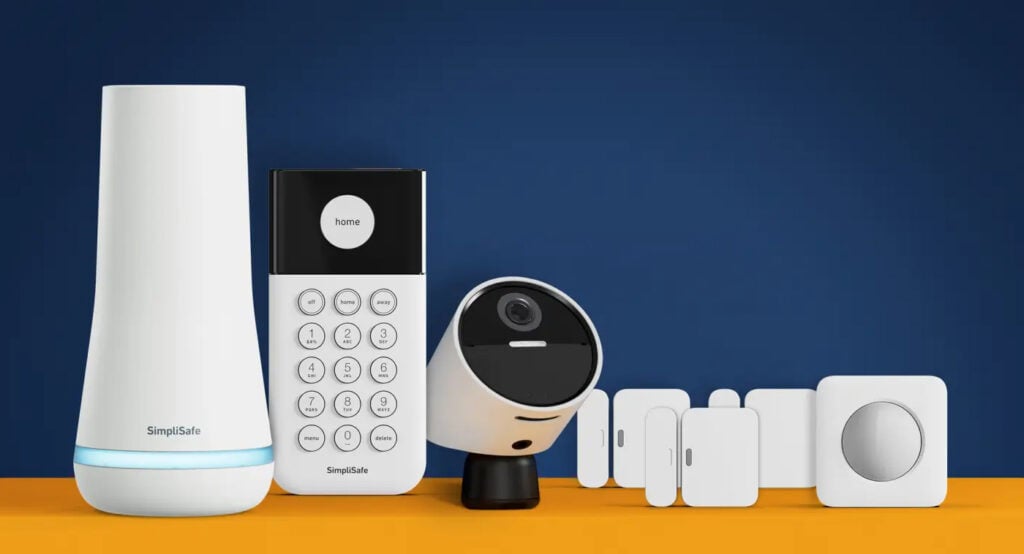
SimpliSafe was originally designed to help renters, but it now offers a wide variety of devices and sensors to build a security system for any home. You can use the devices without signing up for a subscription plan, or you can get 24/7 professional monitoring with SimpliSafe’s Monitoring subscription plans.
- Free: If you don’t want to pay for a subscription plan, you’ll still get real-time notifications, but you’ll only be able to see a live view from your devices and remotely arm and disarm your devices.
- Self Monitoring w/Camera Recordings ($9.99/month): This plan gives you 30 days of unlimited cloud storage for video recordings for up to 5 cameras.
- Fast Protect ($29.99/month): If you want 24/7 professional monitoring and emergency response for break-ins, fires, floods, and more.
ADT
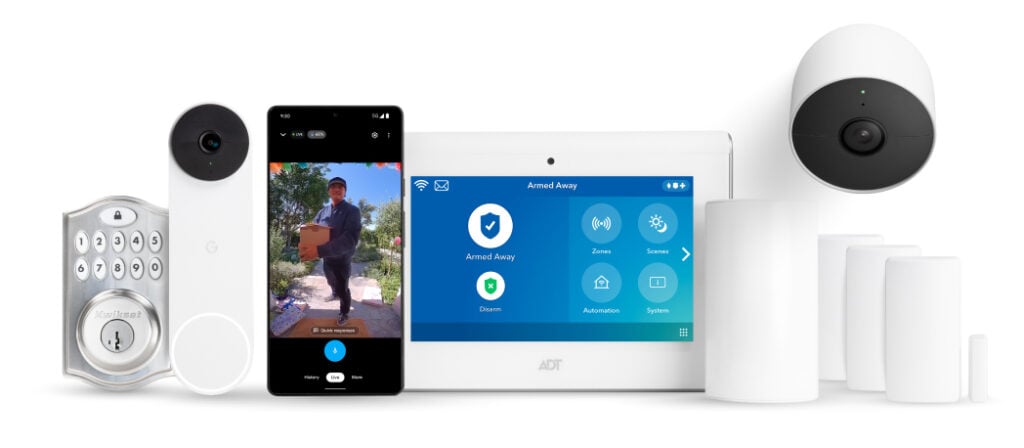
With nearly 150 years of experience, ADT is a traditional security company that now uses smart home devices from Google Nest and other brands. So, you’ll get all the benefits of self-monitoring and professional monitoring, but you’ll have to sign a long-term contract for the devices, installation, and monitoring.
With ADT, you’ll have to pay a fee upfront for a package that includes devices, and the price of each plan will vary depending on your location.
- Build Your Own ($45.99/month): ADT offers 24/7 professional monitoring with their cheapest plan, but you only get a base station, 1 motion detector, and 3 window and door sensors. You can also add more devices for an additional fee, but you won’t get video monitoring through ADT with this plan.
- Smart Home ($49.99/month): If you want to bundle your home security with other smart home devices, this plan comes with all the devices from the Build Your Own plan, as well as a smart lock. You can also integrate more devices with this plan, including smart speakers, smart thermostats, smart lights, and more.
- Video and Smart Home ($59.99/month): ADT’s most expensive subscription plan adds a smart camera and video doorbell, so you can get professional monitoring
Vivint
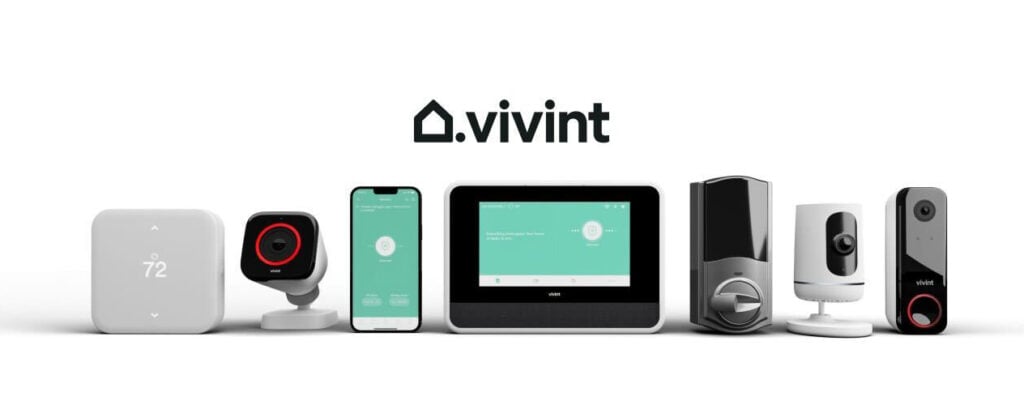
Vivint offers a good selection of devices and sensors, but you need to start with one of their bundles. All of their starter bundles come with 24/7 professional monitoring, and you can add more devices and services as you need them. Unlike other smart security systems, Vivint’s smart hub uses a cellular connection, so you don’t need a strong WiFi network for your devices to stay connected.
- Core Home Security ($600 upfront, $50/month): Vivint’s cheapest package only comes with a control panel, motion sensor, and four window and door sensors. You can always customize the devices you want, and this plan gives you 24/7 professional monitoring.
- Indoor Security ($850 upfront, $60/month): This bundle comes with everything from the starter kit, plus an Indoor Camera Pro. This smart camera can record 90-second videos when motion is detected, which is stored directly to the device. You can also pay extra for the Vivint Playback DVR to get 10 days of 24/7 cloud storage.
- Porch & Package Protection ($850 upfront, $60/month) This bundle comes with everything from the starter kit plus a Doorbell Camera Pro. This video doorbell has person and package detection, and it can automatically light up and sound a siren when someone tries to steal your packages.
- Total Home Security ($1,000 upfront, $60/month): Vivint’s most expensive package comes with an Outdoor Camera Pro, which has most of the same features as the Indoor Camera Pro, except it has a weather-proof casing. You can pair this smart camera with the Spotlight Pro to add a spotlight and siren for scaring unwanted guests away.
Abode

Unlike other smart home security brands, Abode works with all smart home ecosystems, including Apple HomeKit. So, you can set up the Abode hub and add almost any devices you want. You can also get video recordings and 24/7 professional monitoring with one of Abode’s subscription plans.
- Free: You can use your Abode security system without paying for a plan, but you will only be able to arm and disarm your system and view live video from your smart cameras.
- Standard Plan ($7/month): Abode’s basic plan gives you 10 days of cloud storage for videos captured by all your smart cameras and video doorbells.
- Pro Plan ($23/month): Abode’s most expensive plan comes with everything from the standard plan, but you also get 24/7 professional monitoring for break-ins and fires. You’ll also get cellular backup for when your WiFi goes down.
Arlo
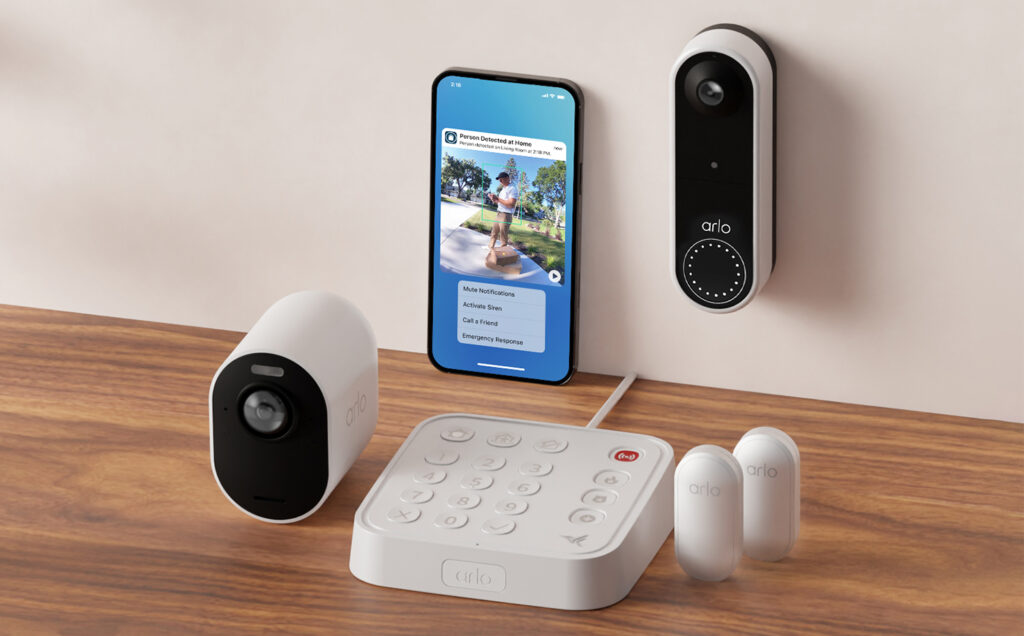
When it comes to smart cameras that can record 4K video, Arlo has some of the best options. Arlo devices also work with all major smart home ecosystems, so you can add them to any smart home setup. You can also get 24/professional monitoring with an Arlo Secure subscription plan.
- Free: Without a subscription plan, you can only see a live view of your smart cameras and video doorbells. However, there are a few Arlo cameras that do provide 7 days of cloud storage for free.
- Arlo Secure ($7.99/month): The cheapest Arlo plan gives you 30 days of cloud storage for video recordings. However, this plan will cost $12.99 if you have more than 1 smart camera or video doorbell.
- Arlo Secure Plus ($17.99/month): This plan gives you 24/7 emergency response, but not professional monitoring. That means you can quickly contact your local fire, police, and medical responders with one tap in the app.
- Safe & Secure ($24.99/month): Arlo’s most expensive plan comes with 24/7 professional monitoring and cellular and battery backup to keep your alarm system running in case your power or WiFi goes down.
Eufy
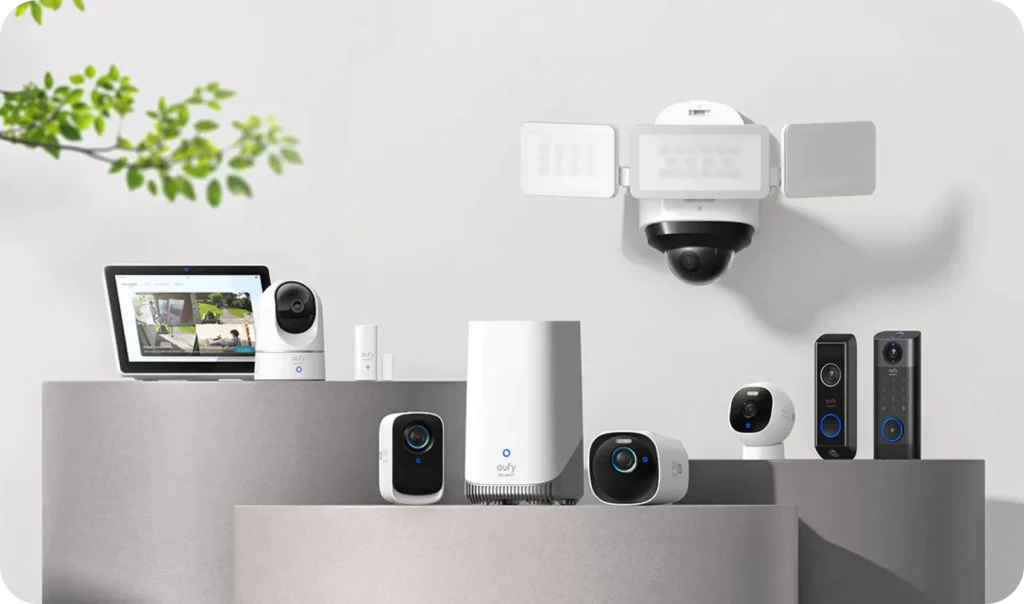
Eufy is different from other smart security systems because you don’t need to pay a monthly subscription fee to store your video recordings locally. Most Eufy security kits come with hard drives that let you store all the videos recorded by your smart cameras and video doorbells, so you’ll be the only one who can access them.
Step 5: Choose Smart Home Security Devices
These days, even traditional security companies offer smart devices with their plans. So, whether you choose to get your smart home security system installed by a traditional security company or do it yourself, it’s important to know which devices to get and what they do. Then make sure your security system supports the devices that your home needs.
To help you decide, here are some of the most common security devices and sensors you can get today.:
Starter Kits
Many smart security devices will come in starter kits, which are great for beginning your smart home journey.
Base Stations
Depending on which smart security brand you choose, a base station is sometimes the device that sounds the actual siren. Some security hubs also act as WiFi extenders or backup batteries to keep your devices running when your power goes out.
Keypads
Certain smart home security kits will come with a keypad that lets you arm and disarm the system without your smartphone. Some security systems also come with key fobs that can arm and disarm your devices.
Smart Cameras
Allows you to see, hear, and speak to visitors in real-time from your smartphone. Also comes with motion detectors built in, so
There are 2 types of smart cameras: indoor models, which are usually hardwired, and outdoor cameras, which are usually battery-powered and more weather-resistant.
Video Doorbells
This device has a smart camera built in, so you can answer your front door from anywhere in the world using your smartphone. You can get hard-wired models that connect to your existing doorbell wires or battery-powered versions that can be installed anywhere.
Smart Locks
Allows you to lock and unlock your door from your smartphone. Also, give guests digital keys to open your door for scheduled periods of time.
Smart Smoke and Carbon Monoxide Detector
Receive alerts when a fire breaks out or carbon monoxide is detected in your home. These devices also let you know when your batteries are running low.
Smart Garage Door Opener
Open your garage from your smartphone, see when other people open your garage door, and schedule times when your garage closes automatically.
Contact Sensors
Contact sensors can be placed on windows or doors to alert you when they are opened.
Motion Sensors
Install these small sensors anywhere on your property to alert you when motion is detected. You’ll receive a notification on your smartphone, and you can set these devices to trigger your alarm too.
Glass Break Sensors
These sensors simply alert you when the sound of glass breaking is detected.
Flood and Freeze Sensors
These sensors can be placed under pipes in your home to alert you when water starts to leak.
Panic Buttons
You can instantly alert your monitoring center or call for emergency services when you push this button.
Smoke Alarm Listeners
Listens for the sound of a traditional smoke detector and sends you a notification.
HelloTech editors choose the products and services we write about. When you buy through our links, we may earn a commission.
